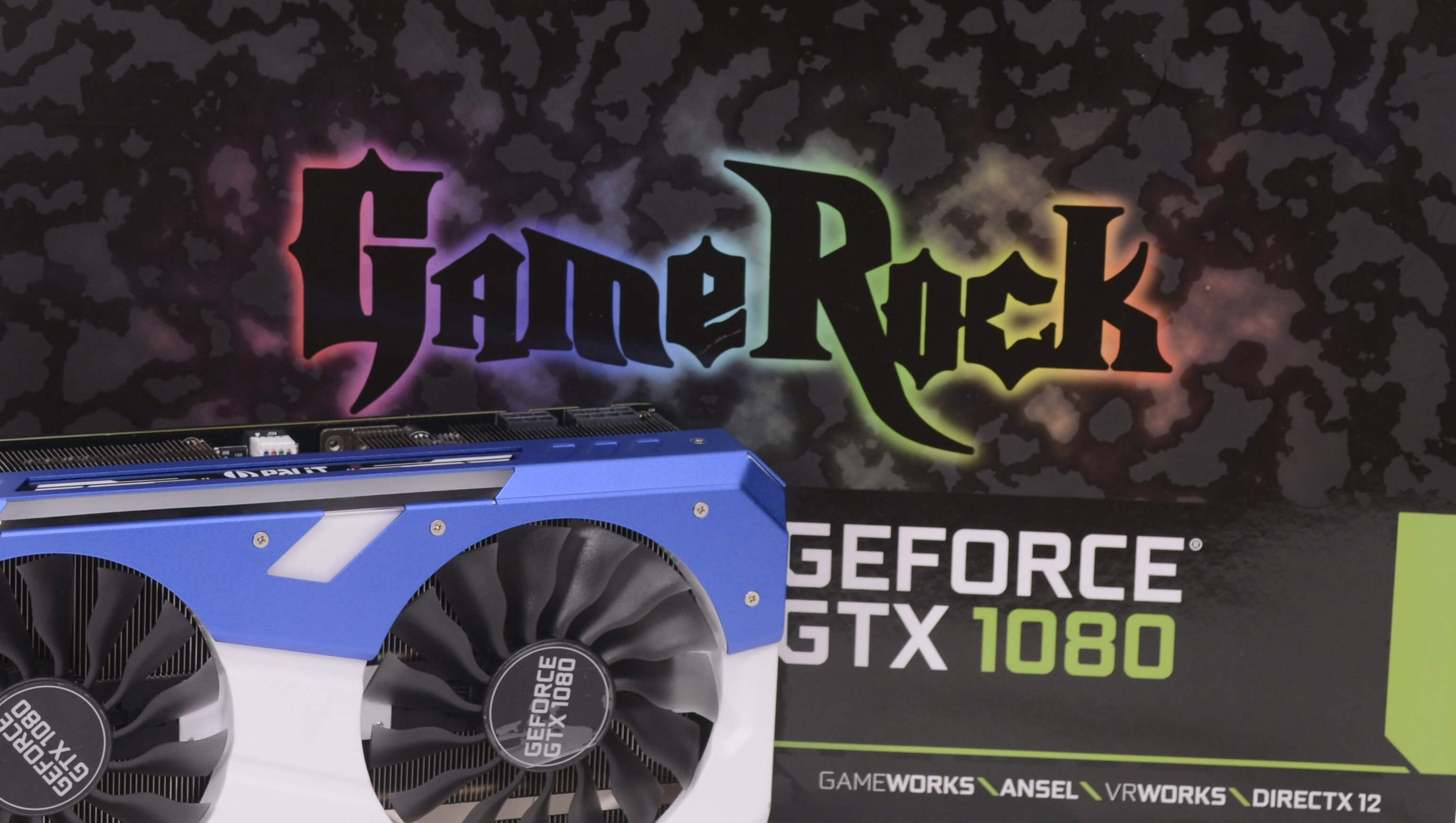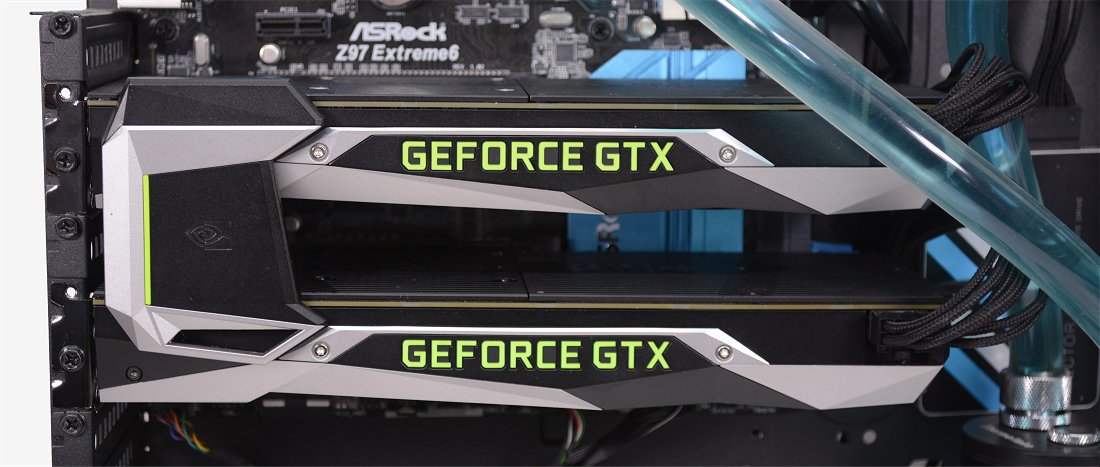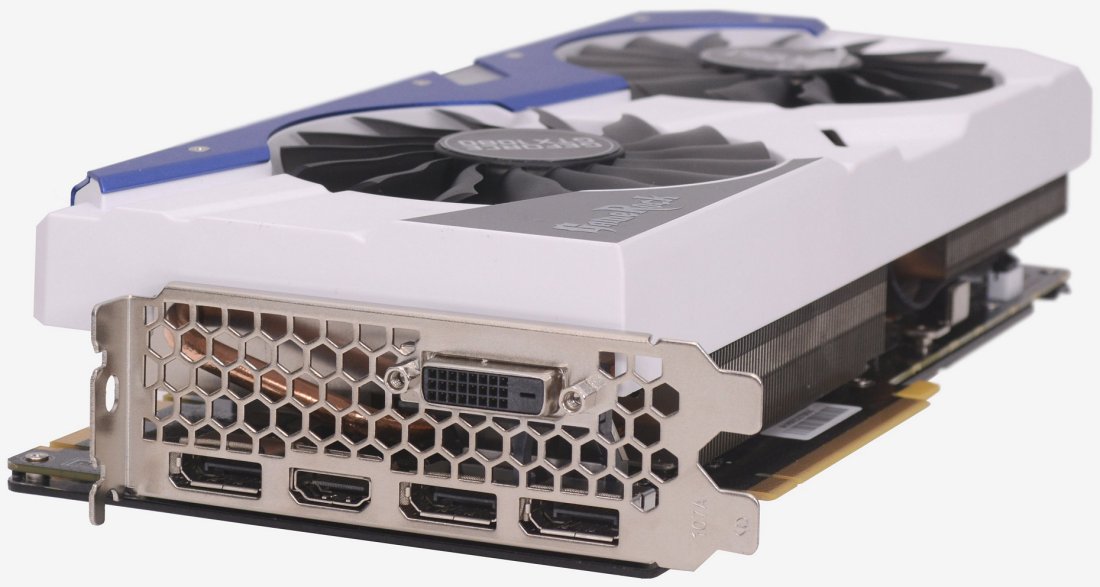Nvidia's new top of the line GPU arrived with quite a bang. The GeForce GTX 1080 allows for no-compromise 4K gaming on a single GPU. In our full review we found that even with the eye candy turned all the way up it was possible to achieve playable performance in all the latest titles.
And yet in spite of this, that didn't mean it was able to hit 60 fps at all times. Hitting that lofty target requires more than any single card on the market can deliver.
The solution? Two GTX 1080s, of course.
In this article, we're taking a close look at the GTX 1080's dual-card SLI performance at 4K resolution to see exactly how much more graphics-crunching horsepower that second GPU brings to the table.
The SLI owners club has remained somewhat exclusive in the past, and the new GeForce 10xx series won't be changing that. If anything, it'd bound to become more limited than before due to the expensive new high-bandwidth SLI bridge.
The new specification, SLI HB (High Bandwidth) simultaneously utilizes two linked interfaces to double available bandwidth between linked GPUs. Nvidia claims the extra bandwidth is required to adequately drive high resolution displays. So, along with the second GTX 1080 graphics card, we also picked up a 3-slot SLI HB bridge.
The GTX 1080s in question are Palit's GTX 1080 GameRock Premium Edition graphics cards, which we'll look at briefly before going into the benchmarks.
Palit GTX 1080 GameRock PE
When compared to Nvidia's Founders Edition, Palit's GameRock Premium Edition is... larger. This behemoth of a card measures 285mm long and stands 133mm tall. It also occupies three expansion slots for good measure.
The GameRock PE's size isn't superficial either. Under that massive fan shroud is one of the largest heatsinks we have ever seen on a graphics card.
All told, there's around 120mm x 185mm worth of aluminium fins, standing 30mm tall. Additionally, they are linked together using not just three 8mm thick copper heatpipes, but also with an additional two 6mm pipes.
These copper heatpipes connect to a large copper base which is 15% larger than the previous base used by Palit's JetStream coolers.
Cooling that huge array of fins are two 100mm Smart Fans featuring TurboFan Blade design, which Palit says has been 'inspired by the power of jet engines'. The "Smart Fan" part comes from the fact that the dual fans rotate in opposite directions to 'reduce airflow conflicts and effectively improve overall cooling performance'. It is an intriguing design choice, though Palit makes no concrete claims regarding performance.
Underneath the cooler is an equally large PCB - and on it, users will find an upgraded power design featuring both an 8-pin PCIE power connector, and additional 6-pin PCIE power connector for greater power input.
Out of the box, the Palit GTX 1080 GameRock PE comes clocked at 1746MHz resulting in a boost clock speed of 1885MHz. That is a 9% boost to the base clock out of the box, which is very good for a GTX 1080. The GDDR5X memory has also been boosted from 5000MHz to 5250MHz resulting in an effective clock speed of 10.5GHz for a memory bandwidth of 336GB/s.
Palit has also capped their card off with some fancy RGB lighting and a nice big backplate. Pricing isn't yet known due to poor availability, but we expect Palit will be charging a small price premium over the $600 MSRP.
Test System Specs
|
Benchmarks: The Witcher 3, Tomb Raider
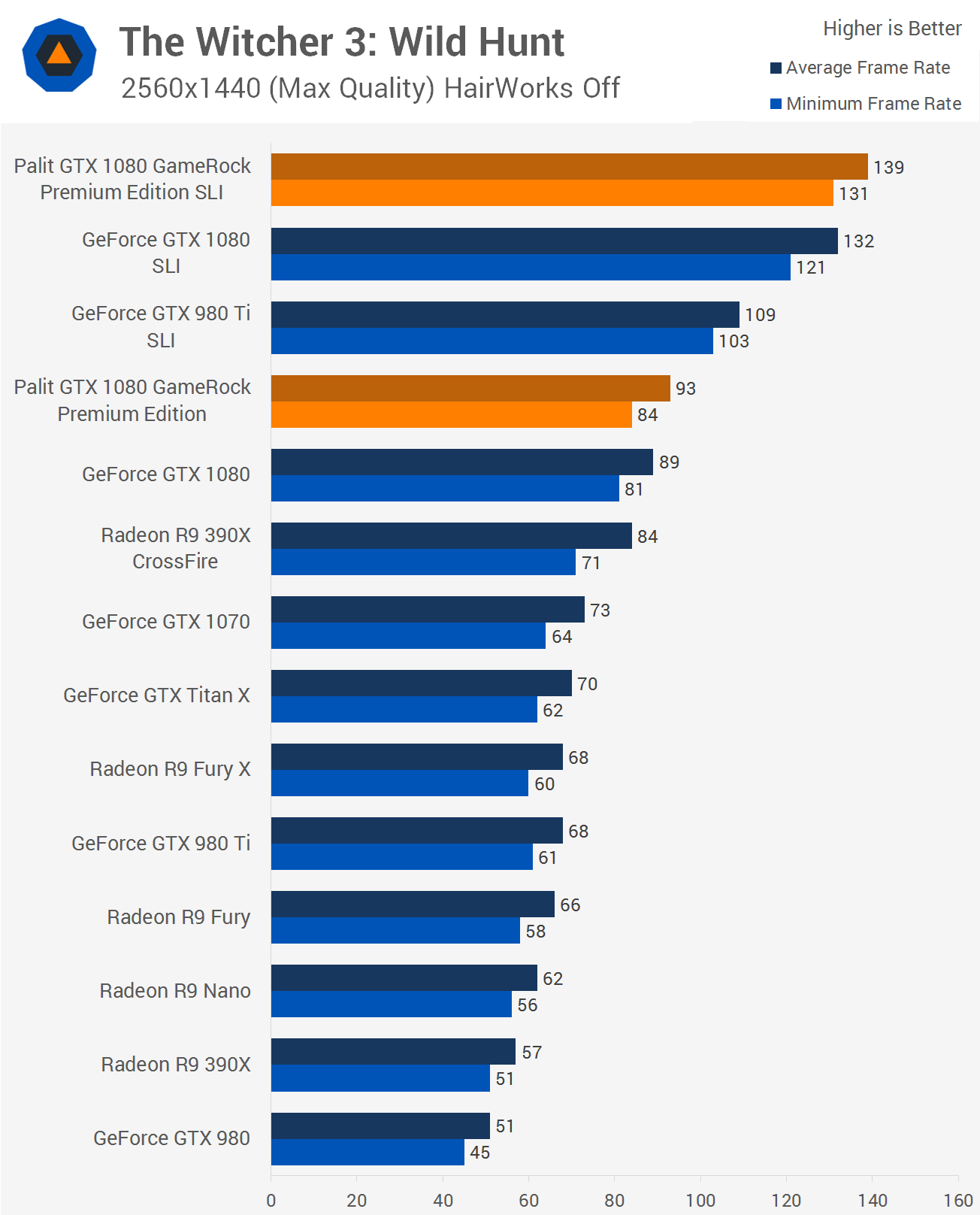
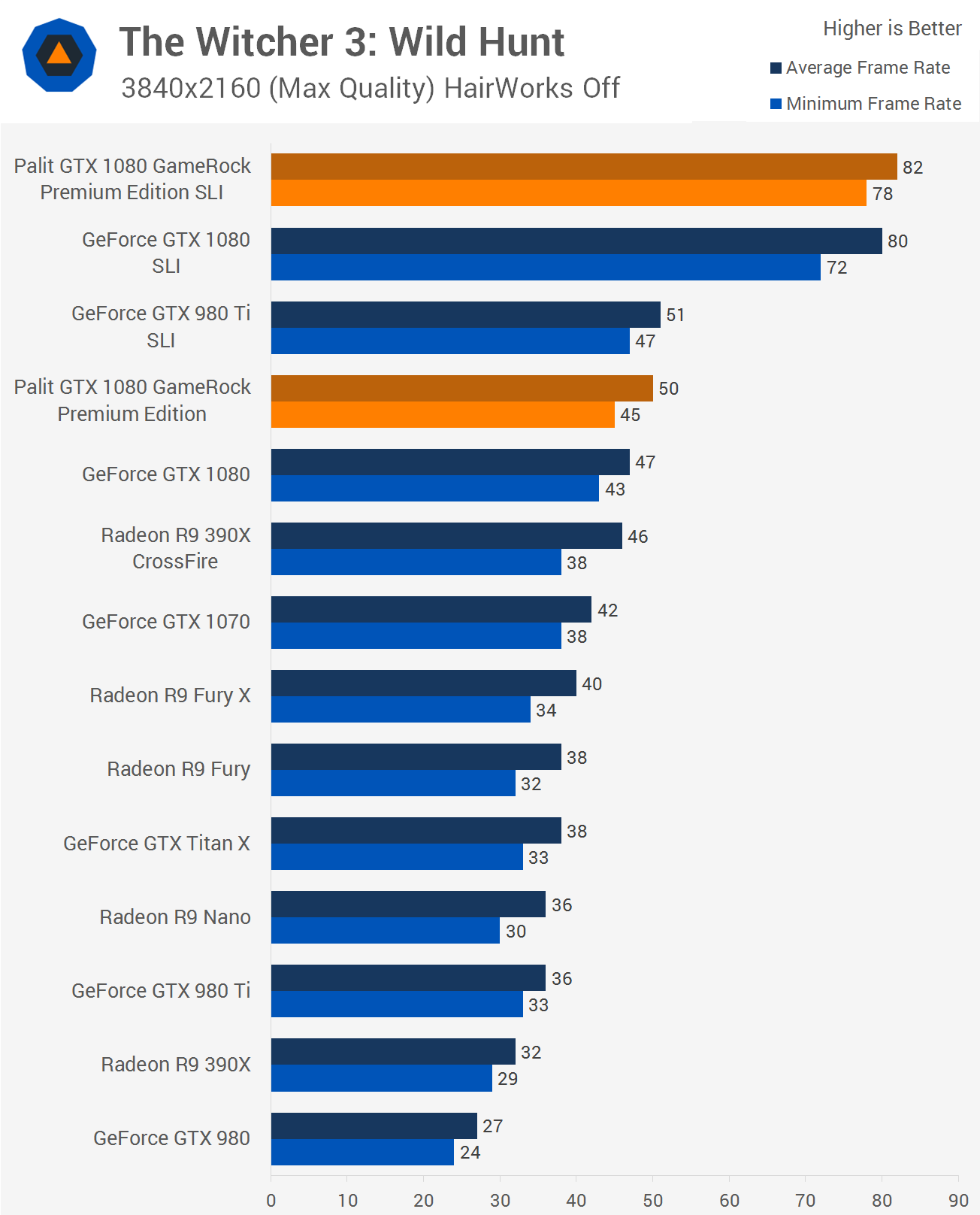
Scaling in The Witcher 3: Wild Hunt isn't too bad with HairWorks disabled. Enabling this feature, however, seems to kill SLI scaling. At any rate, here we see that adding a second Palit GTX 1080 boosts performance by 64% for an average of 82fps at 4K. In comparison, the GTX 980 Ti graphics cards only enjoyed a 42% performance boost when taking advantage of SLI.
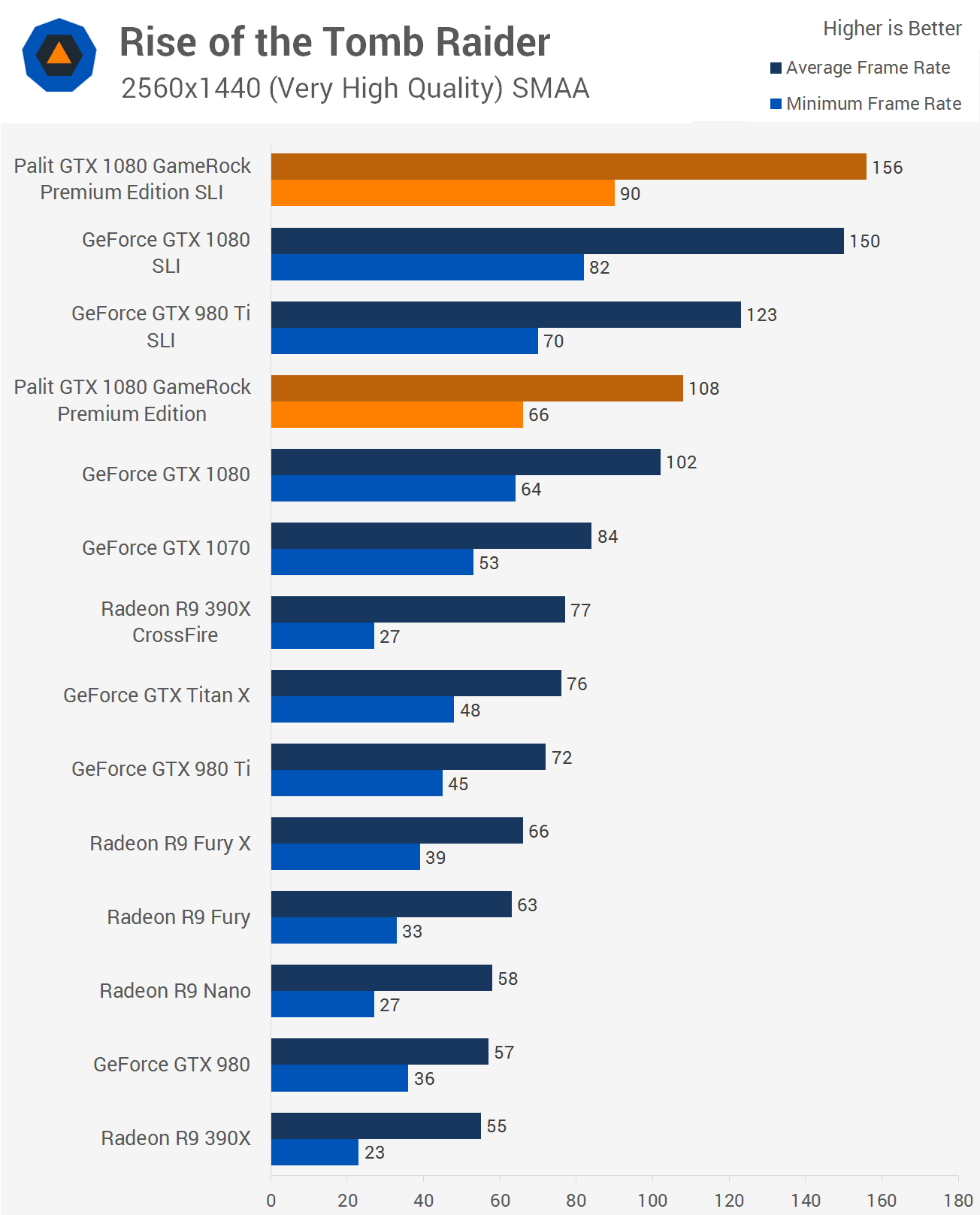
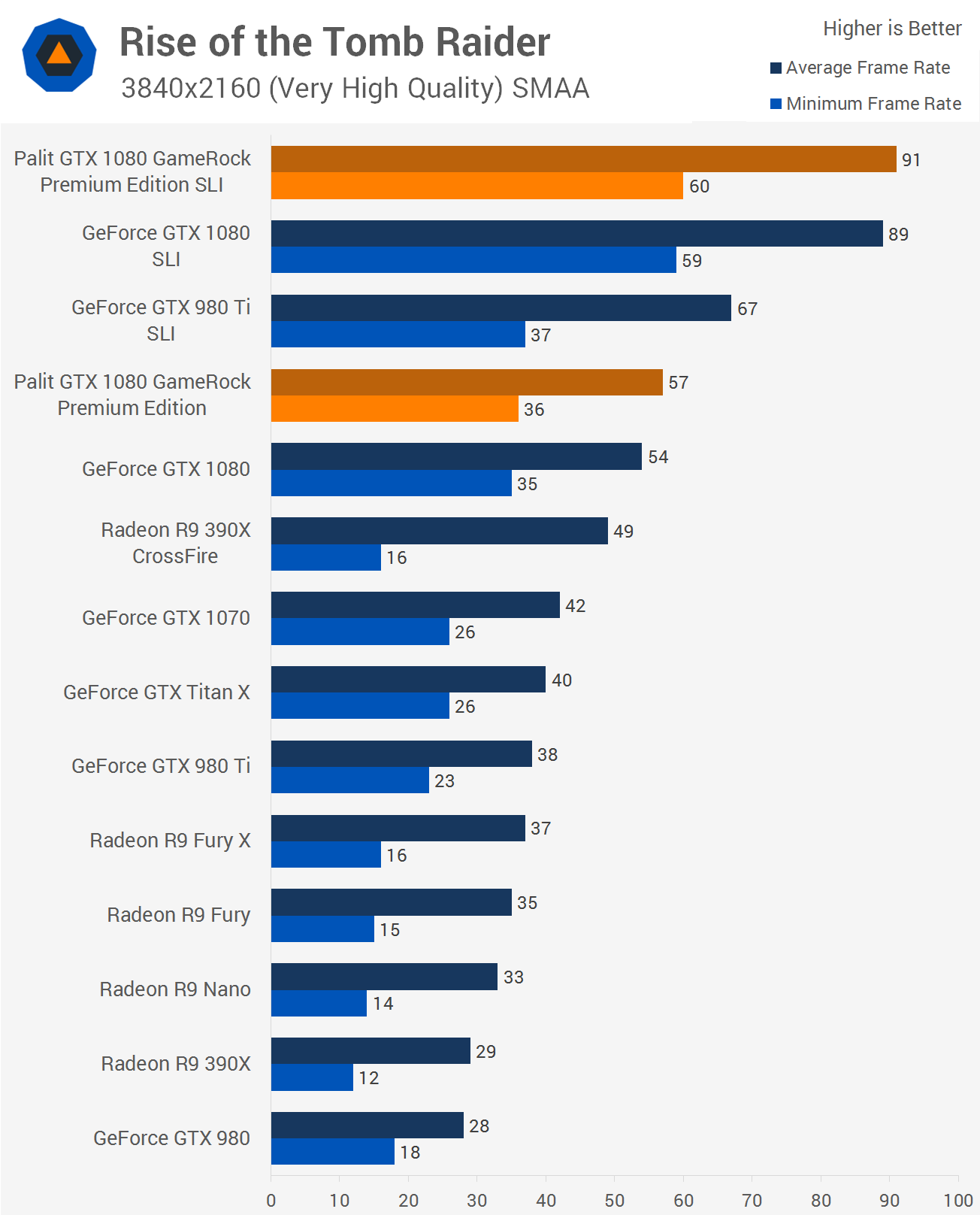
A lone Palit GTX 1080 GameRock PE rendered a very playable 57fps at 4K in Rise of the Tomb Raider, though at times it did drop as low as 36fps. Adding a second card boosted the average frame rate by 60% to 91fps, while the minimum frame rate saw a 67% performance boost. These aren't quite ideal scaling results, but it still made for a very satisfying gaming experience at 4K.
